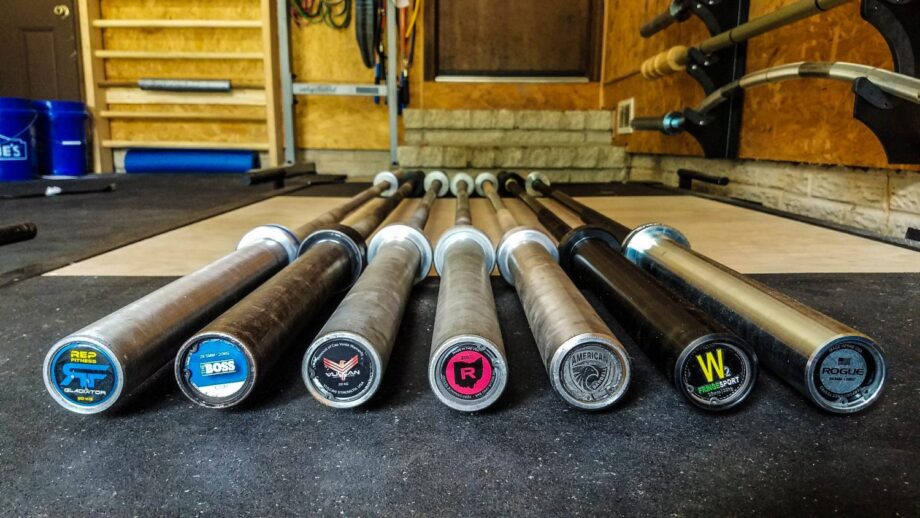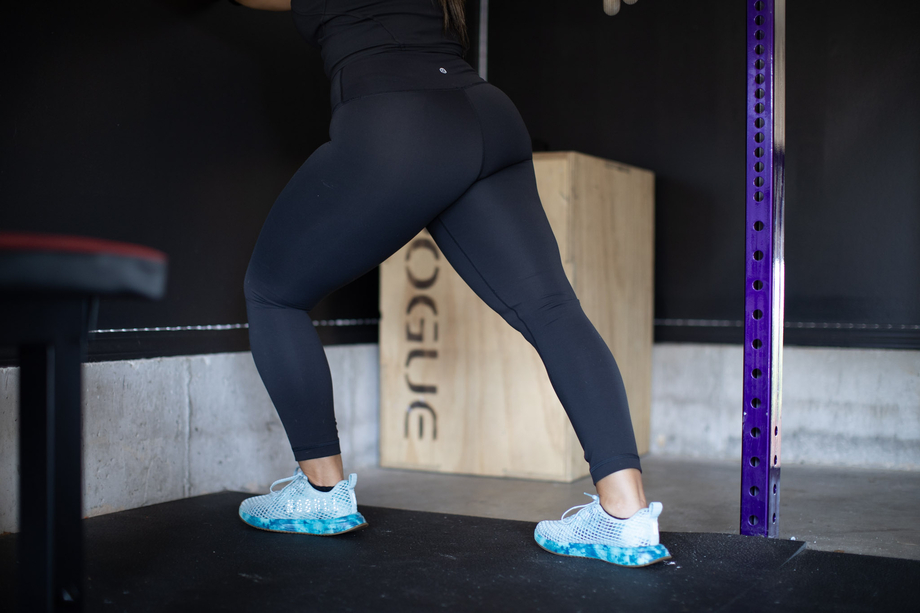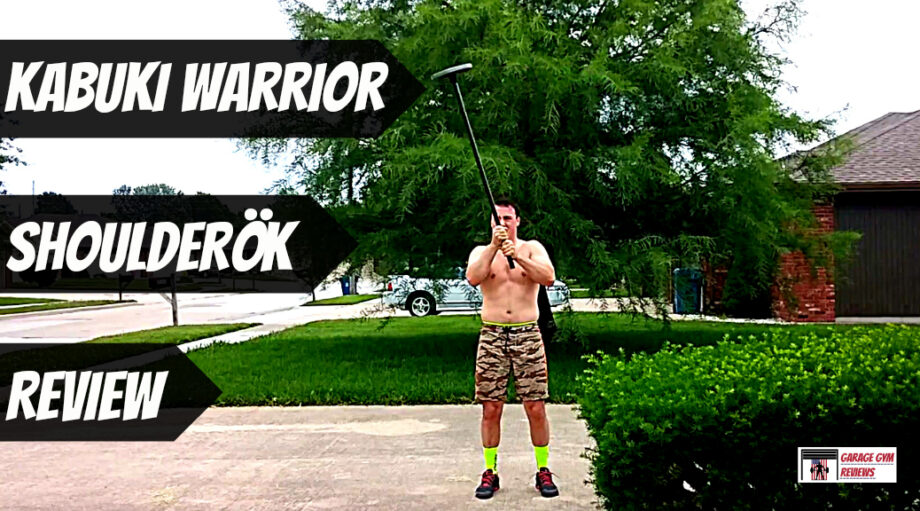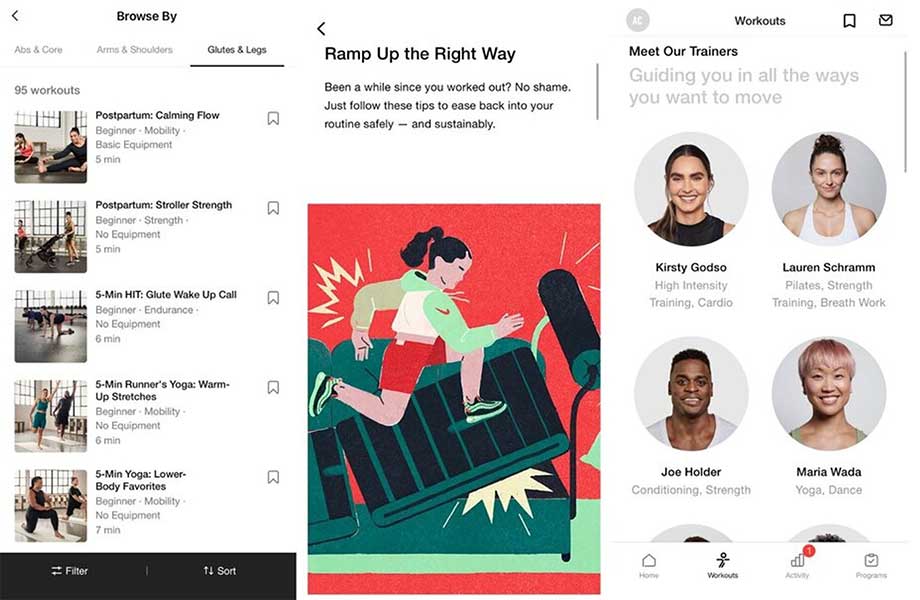You walk into the gym. The lights are dim. Music is playing faintly from the speakers. In the distance someone is screaming while doing triceps extensions.
Your eyes drift over magic hour at the gym. Bustling, but not busy. The light plays over the back corner and something is there, shimmering. You move briskly.
You have spotted the best barbell in the gym.
What makes it the best is the subject of everyone’s favorite freshman pre-req: Barbell Anatomy.
Barbell Specs: The Basics
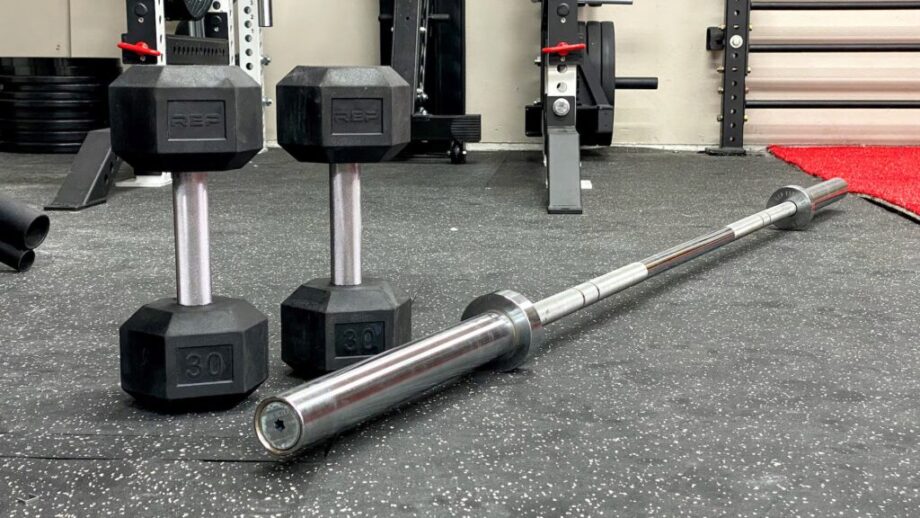
The noble barbell has been a mainstay in the gym for as long as anyone alive can remember. A quality barbell is the cornerstone of every home gym, and the one thing the IPF1 and IWF2 have in common is a mutual love of barbell specs.
While there are several variations on the theme (things like trap bars, safety squat bars, multi-grip bars, EZ bars, and the like) the basic barbell has remained the undisputed champion of resistance training (along with its miniature cousin, the dumbbell).
The aforementioned International Powerlifting Federation1 and International Weightlifting Federation2 (not unlike the ruling bodies in golf) lay out some very specific rules for bars used in their contests. Bodybuilding federations wisely stay out of their way.
Quality bars will share other characteristics as well. Yield strength and tensile strength are both terms you will hear when evaluating a barbell. While few of us will ever have reason to test the limits of 15,000-pound-rated bars, wouldn’t you rather have it than not?
Length
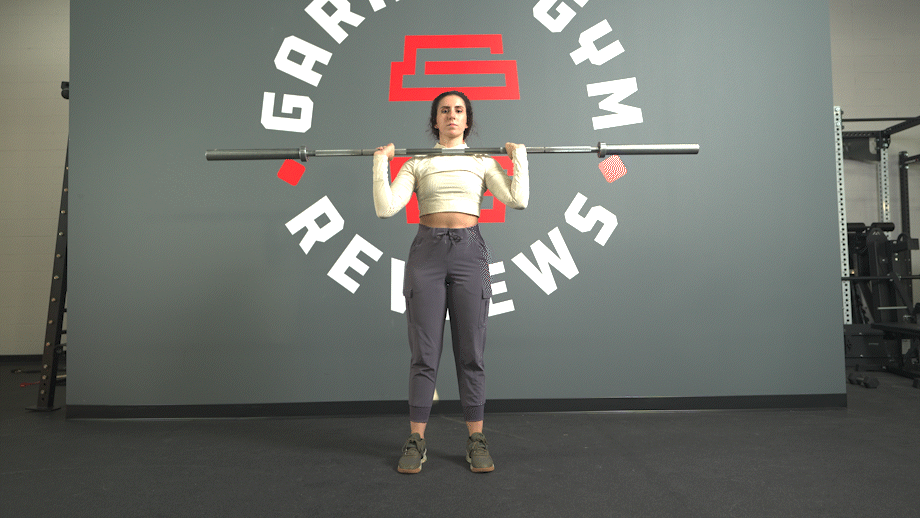
Most barbells are about 7 feet long, or 86 inches to be exact. With powerlifters getting stronger3 and each lift requiring a more specialized barbell to maximize the tonnage, specialty bars have been created for each lift. Deadlift and squat bars may have extended sleeves to allow for more weight plates to be used, increasing the total length of the bar.
Diameter
Most olympic barbells you find in the gym will have a 29-millimeter diameter. This is confusing, but competition barbells made for Men’s Olympic weightlifting will be 28 millimeters in diameter, while women’s competition bars for the sport will be 25 millimeters in diameter (“Olympic” in this context refers to the size of the barbell’s sleeves or the hold in the middle of the weight plate, which we’ll discuss later).
Long, stiff squats bars designed for handling heavy weights can have a slightly larger diameter. This helps give it the stiffness most big squatters like, and provides slightly more surface area to help keep it from rolling off the back.
In reality most strength training takes place with the 29-millimeter diameter bars, save for sport-specific practice with the snatch and clean-and-jerk. If the gym you’re in doesn’t have multiple platforms and lots of brightly colored weights, it probably doesn’t have the smaller diameter bars, and if your ears aren’t bleeding from heavy metal being played over the speakers, it probably doesn’t have the thicker ones.
Weight Options
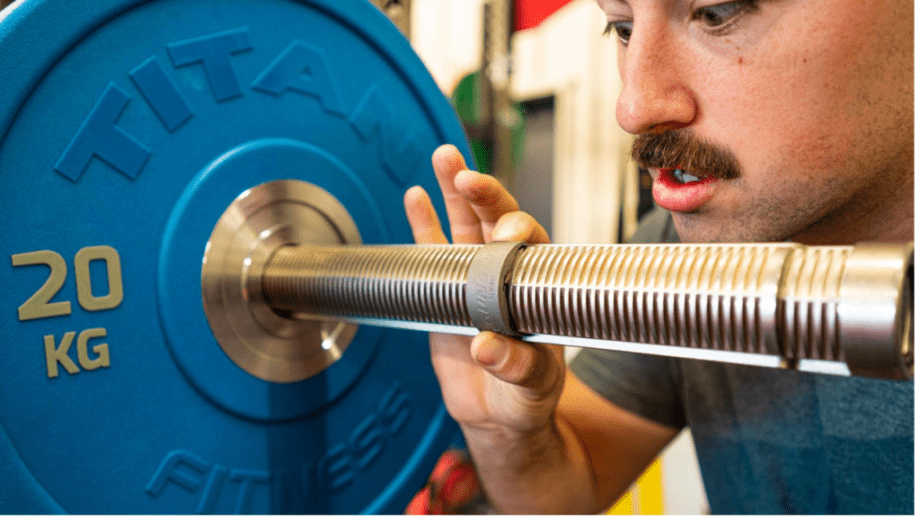
Most bars weigh 20 kilograms or about 45 pounds. Yes, 20 kilos is more like 44 pounds, really, but everyone calls it a 45-pound bar. It’s part of the foundation of doing gym math in pounds.
The smaller 25-millimeter women’s Olympic weightlifting bars are 15 kilograms, and several of the beefier unisex powerlifting bars can be as heavy as 65 pounds.
I’ve never actually seen a female lifter ask for the “women’s bar” at any gym that wasn’t strictly set up for Olympic weightlifting. However, It is useful for beginners to gain confidence in lifts like the strict overhead press where 45 pounds may be too much weight to get in enough reps to feel comfortable with the movement.
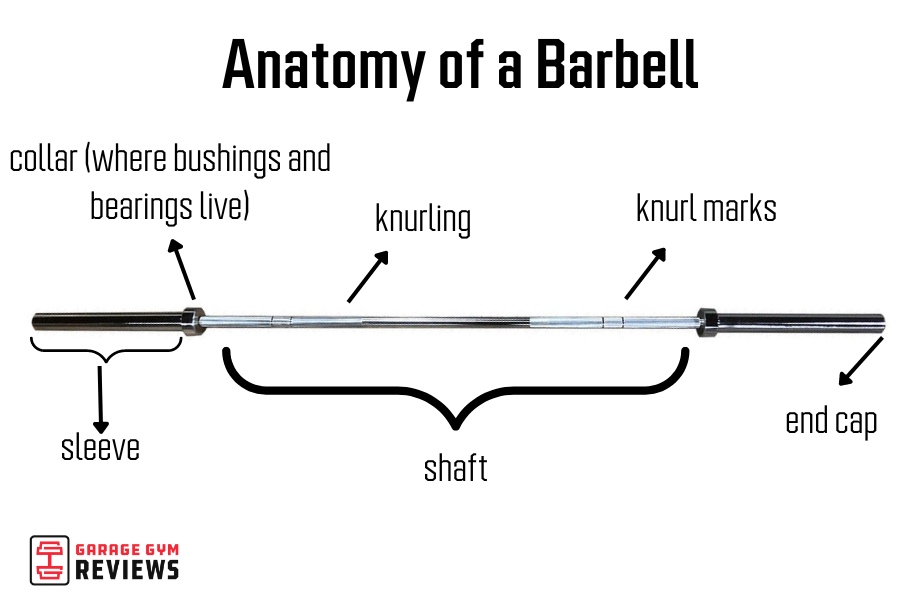
The Anatomy of a Barbell
Quality barbells serve two purposes: to hold weight and to be picked up (I’ve always thought it was weird that an object could exist strictly so that it could have mass).
Olympic barbells have 2-inch sleeves to allow Olympic plates with 2-inch holes to be loaded onto them. Note that “standard” barbells have 1-inch sleeves, but Olympic bars are the “standard” bar you will find, and are used for all kinds of uses other than Olympic weightlifting.
Look, the people who invented gym culture weren’t English majors.
Barbells can be specialized for weightlifting, powerlifting, or made into hybrid bars for CrossFit (and other general training). The specs will be slightly different for each, and are similar enough to each other that most people are able to use any kind of bar for whatever they are doing.
Shaft
A shaft is where you can typically tell whether or not a barbell is high quality. It is the middle section of the barbell; the part you grab or put on your shoulders.
The shaft can be finished with bare steel, black oxide, or, more recently, coated with Cerakote or something called E-coat. These coatings, aside from making the bar look pretty, will also help with corrosion resistance.
Sleeves
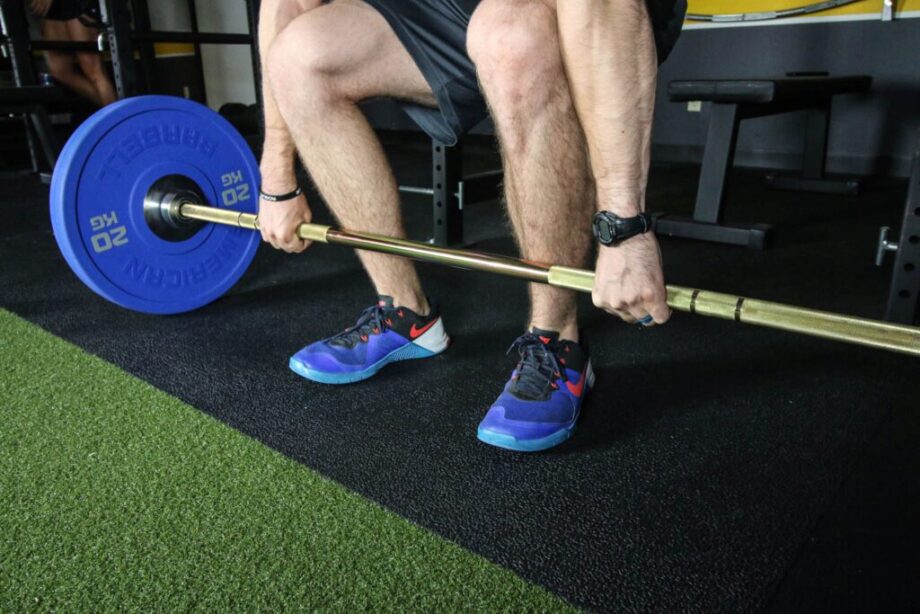
This is where the weight goes. Sleeves are typically chrome-coated but can come in other finishes as well. On Olympic bars these have a 2-inch diameter.
If you don’t have an axle bar and want to try some fat-grip training, you can stick a barbell in a landmine and do exercises holding onto the free sleeve.
Collar
First and foremost, collars provide a barrier between the weights on the sleeve and the shaft. Without them, bumper plates would be free to squash your hands every time you tried to pull.
Collars also do a funny thing in 99% of all barbells; they spin. This is really only useful for the Olympic lifts (which 99% of people in the gym will never do), but it has carried over into all barbell production.
Axles and safety squat bars typically will have non-rotating collars.
Bearings and Bushings
This is the part of the bar inside the collar that allows it to spin. Needle bearings are used in high end weightlifting bars, while bushings provide a less smooth rotation in everything else. If you have to ask “Do I need a bar with expensive needle bearings?” then you probably don’t.
End Cap
This lets everyone know you’re lifting with a Gucci… sorry… Rogue bar instead of some brand nobody has heard of.
An end cap is just a plastic insert or ring that goes on the tip of the sleeve. I didn’t know they existed for the first 10-plus years of my training life.
You can get custom end caps if you like blinging out your gear.
Knurling

This is the stuff that gives you callouses (and if you deadlift with the aggressive knurling of a power bar, cut-up shins). It’s the sharp, almost serrated part of the barbell you hold onto. The sandpaper-like quality gives your hand something to dig into rather than trying to hang onto a smooth, slippery piece of metal.
Sharp center knurling is mostly reserved for squat bars or all-in-one power bars. If you’re a hack Olympic lifter like myself, you’ve probably hit yourself in the head trying to snatch at least once. Hopefully you were using a weightlifting barbell with its passive center knurling, rather than a sharp power bar, so you didn’t just bleed out on the platform.
If you’re not sure how aggressive the center knurling is on your bar, just take a shower after you finish training. If you scream when the water hits you, it’s pretty aggressive!
Knurl Marks
These are sport-specific smooth lines within the knurling. Powerlifting barbells have knurl marks to denote legal hand positioning during a bench press.
Weightlifting bars, likewise, have rings to provide athletes with landmarks for their grip.
Some bars will include both sets of marks.
Lots of people will even create their own markings on unmarked specialty bars like axles/fat bars.
Barbell Anatomy: Q&A
What are the parts of the barbell?
From outside to in, you have: end cap, sleeve, collar, shaft, knurling, knurling marks, and center knurling. It’s a long piece of metal you pick up and put down!
What is the rough part of a barbell?
This is your friend and mine, the knurling. Knurling helps you get a better grip, and smooth marks in the knurling help give you some geographic awareness for where to place your hands on the bar. It’s made in a crosshatch pattern to maximize surface area interaction.
What are the lines on the barbell?
Knurl marks denote legal hand placement in powerlifting and give general-purpose lifters a landmark to use. It’s not just on the bench press; trying lining up in the exact middle of a barbell while squatting without some kind of reference point.
Why are barbells so sharp?
Most of them were in AP classes in high school.
But seriously, you get used to it. Smooth stainless steel is hard to hang onto, especially as you get fatigued (and sweaty). It’s the same reason tennis players tape their rackets and baseball players use pine tar.
If you don’t wear gloves, you’ll develop calluses over time and won’t even notice the knurling.
References:
1. International Powerlifting Federation. Rules and Codes
2. International Weightlifting Federation. Weightlifting Equipment
3. Open Powerlifting. Records


